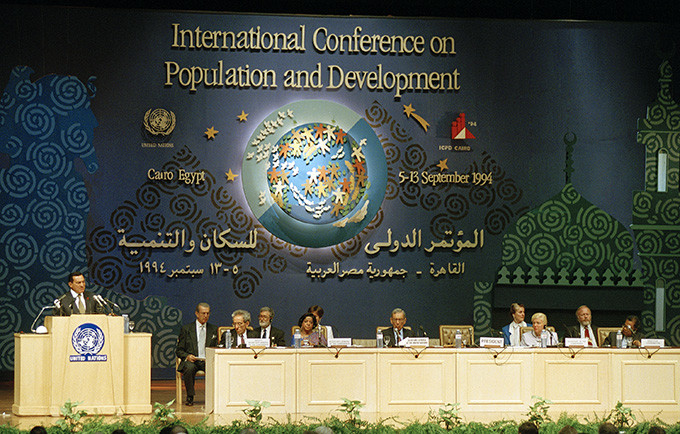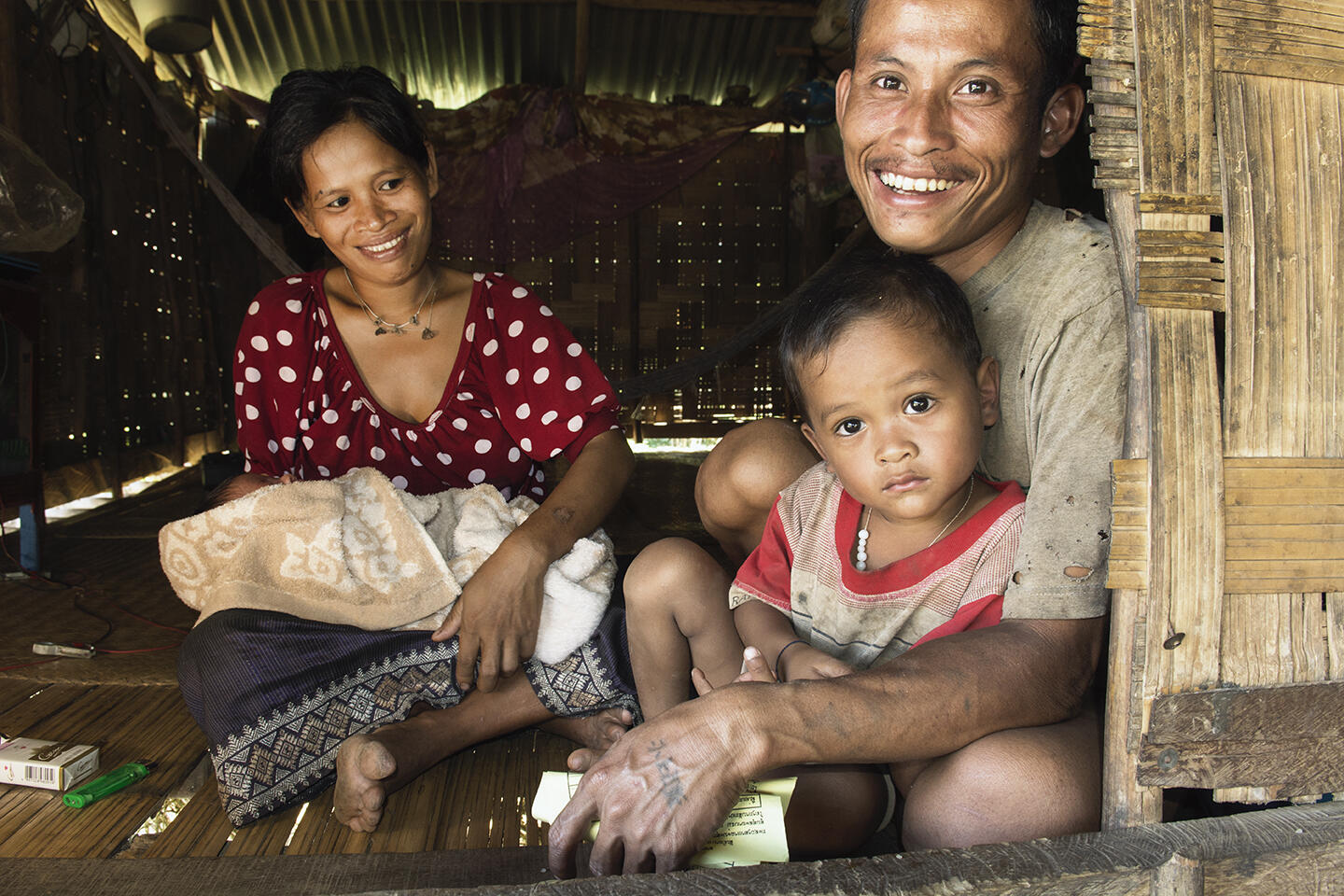Address by Dr Annette Sachs Robertson, Deputy Regional Director UNFPA Asia-Pacific
State of World Population 2019: Unfinished Business - The Pursuit of Rights and Choices for All
Regional Launch, Kuala Lumpur, 10 April 2019
Honourable Minister Dato’ Saifuddin Abdullah, Ministry of Foreign Affairs;
Honourable Dato' Dr. Narimah Awin, Chairperson, National Population and Family Development Board;
Honourable Ambassadors, High Commissioners and Members of the Diplomatic Corps;
Ms. Marcela Suazo, UNFPA Representative for Malaysia, and my dear colleague;
Distinguished guests, including our civil society and media partners;
Ladies and Gentlemen:
Selamat pagi, good morning!
It is a genuine privilege to be here with all of you in Kuala Lumpur today.
This is the first time we have had a regional launch of the State of World Population, UNFPA’s annual flagship report, in Malaysia – and we are delighted and thankful for this opportunity to do so, in the presence of the Government, along with a range of partners and stakeholders, also representing the region.
The State of the World Population Report 2019 is about the unfinished business: the pursuit of rights and choices for all – new realities, new dangers and the new agenda.
2019 is a landmark and exciting year for the United Nations Population Fund, the UN sexual and reproductive health agency. We, UNFPA, turn 50 this year – a very special birthday. And the ICPD Programme of Action, which guides the work we do, turns 25.
ICPD, of course, stands for the International Conference on Population and Development, which took place in Cairo in 1994. That’s when 179 countries – including Malaysia - came together to forge a Programme of Action. For the very first time, sustainable development was grounded in individual rights and choices, and the achievement of sexual and reproductive health for all.
While the ICPD Programme of Action was revolutionary, marking a major paradigm shift in population and development, it wasn’t born out of the blue.

UNFPA's then Executive Director Nafis Sadik and delegates at the ICPD in Cairo, September 1994
In the 1970s, many governments, NGOs and development institutions began supplying an increasing quantity of reliable contraceptives to enable women to better manage their own fertility. But achieving targets – numerical targets - was the primary goal of many early family planning programmes, and this often compromised the quality of reproductive health services and, at times, violated the rights of women.
By 1994, however, a global consensus had emerged that women had a right to make their own decisions about whether, when and how often to become pregnant.
ICPD built on that by clearly demonstrating how reproductive rights and sustainable development are mutually reinforcing. ICPD called for voluntary and rights-based family planning programmes, rather than fertility-controlled targets.
By placing individual rights and choices firmly at the centre of development, ICPD reflected the principles of the United Nations Charter, as well as the pillars of the Universal Declaration of Human Rights, which is the bedrock of all that the UN is meant to do.
The report being launched today asks the question: Are women and girls better off today since UNFPA was established and since ICPD?
The ICPD’s vision of rights and choices came too late for millions of women in many countries, who at the time, were already well into their reproductive years.
Women like Rajeshwari Mahalingam in southern India, who thought she might become a medical worker. Instead, she was made to enter into an arranged marriage, investing her dreams, instead, in her two children, both born via caesarean sections. When told that future deliveries would have to be caesarians too, at a cost more than her family could afford, Rajeshwari felt compelled to undergo a tubal ligation – having already sold her gold jewellery to pay for the delivery of her second child.
Rajeshwari was 10 years old in 1969 – the year UNFPA was established - and 35 years old in 1994, when ICPD came into being.
For her and millions of other women of her generation, the promise of ICPD may not have been fulfilled.
But new realities have emerged in the past quarter-century - ICPD has unlocked opportunities and possibilities for their daughters and millions more women, girls and young people in Asia-Pacific and across the world.
We’ve seen significant gains in meeting unmet need for family planning, as governments spend more on reproductive health programmes and supplies, realising that investments in sexual and reproductive health can translate into economic prosperity.
Maternal and newborn mortality have declined, as women are better able to space their children and access better antenatal care, skilled birth attendance, midwifery, emergency obstetric care, and postnatal care including – increasingly – in humanitarian crisis settings.
Comprehensive sexuality education is being introduced in more and more countries, essential to providing young people with a foundation for life and love.
But the struggle for reproductive rights and choices as envisaged by ICPD is an ongoing one.
Some 214 million women and adolescent girls in developing countries who want modern contraception don’t have it – more than half of them in Asia-Pacific.
About 300,000 women die of preventable causes linked to pregnancy and childbirth each year, 85,000 of them in the Asia-Pacific region, the majority in South Asia.
Far too many young people are denied critical information and services as they transition to adolescence and adulthood.
Rates of child or early marriage, though declining, remain unacceptably high in a number of countries, as do the incidence of gender-based violence, gender-biased sex selection and female genital mutilation.
There are also new dangers and challenges emerging all the time. These include climate change and environmental fragility; a growing number of intractable humanitarian and political crises with a growing number of affected populations in fragile, unstable settings; and shrinking overseas development assistance from traditional donors, shifting the emphasis to domestic financing for sustainable development.
The obstacle underlying all others, of course, remains gender inequality.
It’s true that overall women today have more control over their reproductive lives than at any point in human history. But it’s also true that rising conservatism in the Asia-Pacific region and globally is jeopardizing gains that have been made, reinforcing norms often used to rationalize control over women’s sexuality and reproduction.
We are seeing increasingly draconian laws and policies being introduced in some places, targeting some of the most vulnerable and marginalized of our fellow human beings – policies that are often extreme and unjustified.
We simply can’t afford to be complacent when it comes to ICPD.
So what is the New Agenda discussed in this report?
What is entailed in finishing the business, so that all women and girls everywhere may enjoy their rights and have real choices in life?
As governments have committed to the Sustainable Development Goals, by prioritizing reaching the furthest behind first, including for universal health coverage, sexual and reproductive health and rights for all can be realized. This was reiterated on World Health Day earlier this week. Stronger national commitment and greater domestic funding towards accelerating universal access to health care, including sexual and reproductive health care, especially for the most marginalized, will facilitate the realization of the SDGs and ICPD.
Through continued donor countries’ support for programmes in developing countries, the gains made in recent years will be strengthened and expanded.
To strengthen the voices of civil society, governments and civil society organisations need to work hand-in-hand for optimal results.
By the private sector embracing the ICPD agenda and investing in it, the Sustainable Development Goals can be realised.
And when all stakeholders join hands in bringing about genuine gender equality in a myriad of ways -- we can fully succeed.
When the Programme of Action was approved by 179 countries in 1994, ICPD was meant to be a shared agenda, across UN agencies and governments and civil society and each and every person on this planet – just the way the 2030 Agenda for Sustainable Development and its SDGs are meant to be.
Last week, at UN Headquarters in New York, Member States at the 52nd Commission on Population and Development unanimously adopted a political declaration reaffirming support for ICPD, calling upon leaders and organizations to accelerate efforts to achieve its goals and linking these to achieving the SDGs.
This clearly demonstrates that there is a new momentum being built at the global level.
This November, UNFPA is convening governments, civil society and other supporters, at the Nairobi Summit on ICPD25, co-sponsored by Kenya and Denmark, where we will seek additional commitments to complete the unfinished business of ICPD - to help ensure no one is left behind in achieving sexual and reproductive health and rights for all.
Women and girls are counting on us to finish the unfinished business of rights and choices for all. We must honour our commitment – acknowledge the new realities, address the new dangers and embrace the new agenda.
Terima Kasih!


